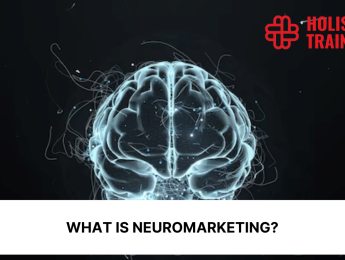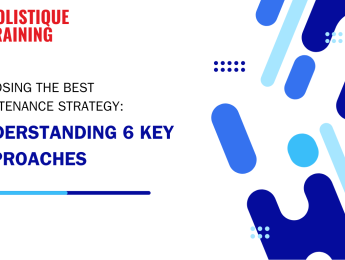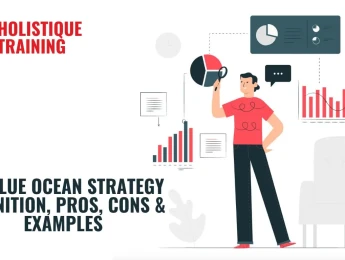- Table of Contents
- What Is Neuromarketing?
- Consumer Behaviour and Neuromarketing
- Neuromarketing vs. Conventional Marketing
- Neuromarketing Techniques
- 1. Brain Imaging
- 2. Eye Tracking
- 3. Facial Expression Analysis
- 4. Biometric Measurements
- 5. Neurofeedback
- 6. Implicit Association Tests: Tapping into the Subconscious
- 7. Neuro-linguistic Programming (NLP): Crafting Persuasive Language
- Expanding the Horizon
- Why Is Neuromarketing More Effective?
- Emotions Over Rationality
- Subconscious Triggers
- Personalisation
- Long-Lasting Impressions
- Predicting Unexpressed Desires
- Building Authentic Connections
- Adapting to Modern Technology
- A Profound Paradigm Shift
- Neuromarketing Real-Life Examples
- 1. Coca-Cola's Neuroscience-Inspired Redesign
- 2. Super Bowl Advertisements
- 3. Shopping Mall Layouts
- The Ethical Considerations of Neuromarketing
- Privacy and Consent
- Responsibility in Data Handling
- Avoiding Manipulation
- Informed Decision-Making
- Long-term Impact on Society
- In Conclusion
The realm of marketing is ever-evolving, driven by the constant quest to understand what makes consumers tick. While conventional marketing strategies have made significant strides, they often grapple with the challenge of penetrating the intricate layers of the human mind. This is where the captivating realm of neuromarketing comes into play – a fusion of neuroscience and marketing that promises to unravel the enigmatic processes steering consumer decisions. With a focus on deciphering the underlying neural symphony, neuromarketing opens a gateway to a profound comprehension of consumer preferences, emotions, and motivations.
What Is Neuromarketing?
At its core, neuromarketing is the scientific study of how the human brain responds to marketing stimuli. It draws upon the principles of neuroscience to delve into the subconscious processes that influence consumer behaviour and purchasing decisions. By analysing brain activity, physiological responses, and psychological triggers, neuromarketers gain unprecedented insights into consumer preferences, emotions, and motivations.
Consumer Behaviour and Neuromarketing
Consumer behaviour is a complex interplay of conscious and subconscious factors. While traditional market research methods rely on surveys, focus groups, and self-reported data, these approaches often fall short of capturing the true essence of consumer motivations. Neuromarketing bridges this gap by tapping into the underlying neural processes that drive behaviour.
Imagine you're considering buying a new smartphone. Traditional research might ask you about your preferred features and price range, but it can't uncover the underlying emotional responses triggered by different brands, designs, or colours. Neuromarketing, however, can unveil your brain's reactions when exposed to various visual stimuli and product attributes. This provides a more accurate picture of what truly influences your decision-making.
Neuromarketing vs. Conventional Marketing
So, how does neuromarketing differ from conventional marketing strategies? The answer lies in the depth of insights provided. Traditional marketing often relies on broad demographic data and assumes that individuals within a certain group share similar preferences. Neuromarketing, on the other hand, acknowledges the uniqueness of each consumer's brain.
While traditional marketing might target women aged 25-35 with a certain product, neuromarketing investigates how specific elements of the product, such as packaging colours or font styles, trigger responses in the brains of individual women within that group. This level of personalised understanding allows for highly tailored marketing strategies that resonate on a subconscious level.
Neuromarketing Techniques
Neuromarketing techniques are the guiding compasses that navigate marketers through the uncharted territory of the human mind. These methodologies delve deep into the subconscious, unveiling the hidden triggers that guide consumer behaviour. Let's explore some of the most powerful techniques employed in neuromarketing:
1. Brain Imaging
Among the most awe-inspiring tools in the neuromarketing arsenal are Functional Magnetic Resonance Imaging (fMRI) and Electroencephalography (EEG). fMRI scans provide a visual map of brain regions that ignite when exposed to specific stimuli, giving marketers invaluable insights into the areas linked to emotions, memory, and decision-making. EEG, on the other hand, captures the dynamic dance of electrical brain activity, granting real-time glimpses into how the brain processes various sensory inputs.
2. Eye Tracking
The eyes, often described as windows to the soul, also offer windows into consumer behaviour. Eye tracking technology monitors the movement of a person's gaze as they engage with visual content, revealing where attention is focused and where it wavers. This technique is especially valuable in optimising web layouts, packaging designs, and advertisement placements, ensuring that the most critical elements capture the viewer's attention.
3. Facial Expression Analysis
In a world where microexpressions convey feelings even before words are spoken, facial expression analysis stands as a potent neuromarketing tool. By detecting microexpressions – fleeting facial movements that reflect underlying emotions – marketers can assess the emotional resonance of their content. A raised eyebrow, a subtle smile, or a fleeting frown can reveal the emotional journey that a consumer experiences while interacting with a brand.
4. Biometric Measurements
Our bodies hold within them a treasure trove of information, including our emotional responses. Biometric measurements, such as heart rate, skin conductance, and cortisol levels, offer quantitative insights into the intensity of emotional engagement. When a consumer encounters a product or an advertisement, these physiological markers respond, providing a precise measure of the emotional impact.
5. Neurofeedback
Neurofeedback is an innovative technique that empowers individuals to regulate their own brain activity. While not as commonly used in traditional marketing, this approach offers a unique way to enhance brand experiences. By providing real-time feedback on brain activity, marketers can encourage consumers to amplify positive emotional responses, forging deeper connections with brands and products.
6. Implicit Association Tests: Tapping into the Subconscious
Implicit Association Tests (IATs) unravel hidden biases and associations that reside in the subconscious. By measuring response times to pairings of different stimuli, marketers can uncover implicit attitudes and preferences that consumers might not even be aware of. This insight enables brands to create campaigns that resonate on a deeply ingrained level.
7. Neuro-linguistic Programming (NLP): Crafting Persuasive Language
Neuro-linguistic Programming (NLP) is a psychological approach that explores the connection between language, behaviour, and neurological processes. It offers tools for crafting persuasive language that resonates with consumers' subconscious desires. By tailoring messages to match the consumer's preferred communication style, brands can establish rapport and trust, fostering a sense of connection.
Expanding the Horizon
The beauty of neuromarketing techniques lies in their ability to unveil the concealed underpinnings of consumer behaviour. By tapping into the subconscious and bypassing conscious biases, these methods grant marketers a backstage pass to the symphony of neural responses that orchestrate decision-making. As technology and our understanding of the brain advance, the potential for even more sophisticated and nuanced techniques within the realm of neuromarketing becomes an exciting reality. By exploring these techniques, businesses can craft marketing campaigns that resonate on a profound level, forging connections that extend far beyond the surface.
Table 1: Metrics to measure the effectiveness of a neuromarketing campaign
Metric | Description | Evaluation Criteria |
Emotional Engagement | Measure emotional resonance with brand stimuli. | High neurophysiological and behavioural responses observed. |
Memory Retention | Assess how well brand experiences stick in memory. | Recall and recognition rates above baseline expectations. |
Conversion Rates | Evaluate the impact on actual purchasing decisions. | Increased conversion rates compared to historical data. |
Brand Loyalty | Gauge long-term connection and loyalty to the brand. | Sustained engagement and repeat purchases over time. |
Neural Synchronisation | Measure alignment of consumer and brand brain activity. | Observable synchronisation patterns indicative of strong connections. |
Why Is Neuromarketing More Effective?
In the world of marketing, the battle for consumer attention and loyalty rages on. However, as consumer behaviour continues to reveal its intricate complexity, the limitations of traditional marketing strategies have become increasingly apparent. Enter neuromarketing, a discipline that doesn't just scratch the surface but dives deep into the neural labyrinth to unlock the true drivers of consumer decisions. But why exactly is neuromarketing so much more effective than its conventional counterparts? Let's explore the profound reasons behind its success.
Emotions Over Rationality
At the heart of neuromarketing's effectiveness lies the recognition that emotions are potent catalysts for decision-making. Conventional marketing often relies on presenting logical arguments and data-driven facts to sway consumers. However, studies have repeatedly shown that emotions wield significant influence over our choices. Neuromarketing capitalises on this insight by tapping into the emotional resonance of stimuli, forging connections that are not easily swayed by mere rationality.
Subconscious Triggers
Our subconscious minds play a substantial role in shaping our preferences and actions. Neuromarketing acknowledges that a considerable portion of our decision-making occurs beneath the threshold of conscious awareness. By dissecting the impact of visuals, sounds, colours, and even scents on the subconscious, neuromarketers uncover the triggers that prompt consumers to choose one brand over another. This allows for the creation of marketing campaigns that appeal to the audience's deepest desires, often ones they aren't fully conscious of.
Personalisation
While traditional marketing often clusters consumers based on demographics, neuromarketing dives deeper into the individuality of each consumer's brain. It recognises that two individuals within the same demographic can have vastly different emotional responses to the same stimulus. By crafting messages and designs that resonate with an individual's unique neural landscape, brands can foster a stronger and more lasting connection.
Long-Lasting Impressions
Neuromarketing's emphasis on emotions has a direct impact on memory retention. Emotionally charged experiences tend to stick in our memories for far longer than neutral ones. This is a critical advantage for brands seeking to establish a lasting presence in consumers' minds. Whether it's an emotionally evocative advertisement or a sensory-rich shopping experience, neuromarketing leaves imprints that linger, shaping future decisions.
Predicting Unexpressed Desires
Human behaviour is often driven by desires that are unexpressed or masked by social norms. Neuromarketing has a unique ability to tap into these hidden currents. By decoding the neural responses to various stimuli, marketers can identify desires that consumers might not even be consciously aware of. This insight allows for the creation of products and campaigns that fulfil latent needs and wants, creating a sense of resonance and fulfilment.
Building Authentic Connections
Storytelling is a fundamental aspect of marketing, and neuromarketing elevates its impact. It recognises that narratives can trigger neural synchronisation – a phenomenon where the brains of a storyteller and a listener exhibit similar activity patterns. This synchronisation fosters a sense of connection and empathy, allowing brands to craft narratives that resonate deeply and establish authentic bonds.
Adapting to Modern Technology
In today's digital age, consumer attention spans are fleeting, and the competition for engagement is fierce. Neuromarketing techniques are tailored to adapt to this evolving landscape. By understanding which elements of digital content capture and maintain attention, marketers can design online experiences that captivate consumers in a world brimming with distractions.
A Profound Paradigm Shift
Neuromarketing is more than just a trend; it represents a paradigm shift in the way we understand and influence consumer behaviour. By delving into the neural symphony that orchestrates decisions, this discipline transcends the limitations of traditional marketing. Through its focus on emotions, personalisation, and the unspoken desires that govern our choices, neuromarketing creates a profound impact that resonates deeply with consumers and leaves an indelible mark on their preferences and decisions.
Neuromarketing Real-Life Examples
Several real-life examples demonstrate the efficacy of neuromarketing in shaping consumer behaviour:
1. Coca-Cola's Neuroscience-Inspired Redesign
Coca-Cola's iconic red can undergo a subtle but significant redesign based on neuromarketing insights. By analysing brain responses to various shades of red, the company discovered a hue that triggered strong positive emotions. This strategic colour change aimed to enhance the overall consumer experience and emotional attachment to the brand.
2. Super Bowl Advertisements
Super Bowl commercials are some of the most anticipated and discussed ads of the year. Neuromarketing techniques have been employed to measure viewers' brain activity during these advertisements. This research revealed the moments of highest engagement, helping marketers refine their messaging and visuals for maximum impact.
3. Shopping Mall Layouts
Retailers often rely on neuromarketing insights to optimise store layouts. By tracking shopper eye movements and monitoring which areas of the store receive the most attention, retailers can strategically position products and signage to drive sales. This approach recognises that the shopping experience is not solely about rational decision-making; it's also about the emotions and instincts that guide us.
The Ethical Considerations of Neuromarketing
As we venture into the intriguing realm of neuromarketing, where the neural symphony orchestrating consumer decisions is meticulously studied, we find ourselves at the crossroads of innovation and ethical responsibility. While the insights derived from neuromarketing are undeniably powerful, they raise profound ethical considerations that demand careful reflection.
Privacy and Consent
One of the foremost ethical concerns in neuromarketing revolves around privacy and consent. Neuromarketers delve deep into the intricacies of individual minds, collecting sensitive data related to emotions, preferences, and decision-making processes. As this information is inherently personal, ensuring transparency and obtaining informed consent become imperative. Consumers must be aware of the nature of the data being collected, how it will be used, and have the right to opt in or out of such studies. Striking a balance between leveraging the power of neuromarketing and respecting individual privacy is a delicate yet essential challenge.
Responsibility in Data Handling
The ethical journey continues in how neuromarketers handle and store the sensitive data obtained from their studies. Implementing robust security measures to protect this information from unauthorised access and potential misuse is not just good practice but a moral obligation. Establishing industry-wide ethical guidelines and standards for data handling is crucial in fostering trust between businesses, consumers, and the neuromarketing industry as a whole.
Avoiding Manipulation
Neuromarketing's ability to tap into the subconscious raises concerns about the potential for manipulation. Crafting campaigns that exploit deep-seated emotional triggers to influence consumer behaviour poses ethical questions about the line between persuasion and manipulation. It becomes imperative for neuromarketers to adhere to ethical standards that prioritise authenticity and transparency, steering clear of practices that could be perceived as deceptive or coercive.
Informed Decision-Making
Ensuring that consumers make informed decisions about their participation in neuromarketing studies is a fundamental ethical principle. This involves providing clear explanations of the study's purpose, potential implications, and the voluntary nature of participation. Consumers should not be coerced into participating, and they should have the right to withdraw from studies at any point without facing negative consequences.
Long-term Impact on Society
Beyond individual considerations, ethical contemplation extends to the potential societal impact of widespread neuromarketing practices. Discussions on how neuromarketing might contribute to shaping cultural norms, influencing social attitudes, or exacerbating societal inequalities become essential. Addressing these concerns requires ongoing dialogue, collaboration, and a commitment to shaping neuromarketing practices that align with broader societal values.
In navigating the ethical landscape of neuromarketing, it is crucial for practitioners, businesses, and regulators to collaboratively establish and uphold ethical standards. By doing so, we can harness the benefits of neuromarketing responsibly, ensuring a harmonious balance between innovation and ethical integrity in the dynamic world of consumer insights.
In Conclusion
Neuromarketing is a powerful discipline that unlocks the hidden layers of consumer behaviour. By delving into the subconscious, emotional, and physiological responses that influence decisions, businesses can create more targeted and effective marketing campaigns. While traditional marketing methods certainly have their place, the ability of neuromarketing to tap into the very essence of human decision-making offers a new frontier for crafting impactful brand experiences. As technology continues to advance, we can only imagine the exciting possibilities that await in the realm of neuromarketing.
As you navigate the intricate pathways of consumer behaviour, understanding the neurological nuances becomes a game-changer. Elevate your expertise and revolutionise your approach with our course, ‘Mastering Business to Business Marketing.’ This comprehensive program not only empowers you with the latest in B2B marketing strategies but also delves into the principles of neuromarketing, unveiling the science behind consumer decisions. Enrol now to harness the synergy of B2B mastery and neuromarketing prowess, ensuring that your campaigns not only resonate but leave an indelible mark on the neural symphony of your target audience. Embrace the future of marketing, where business intelligence meets the artistry of neuromarketing, and propel your brand to unprecedented heights.
























